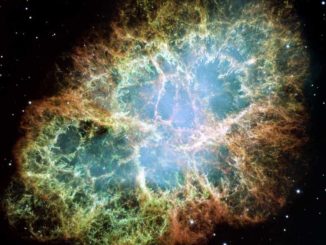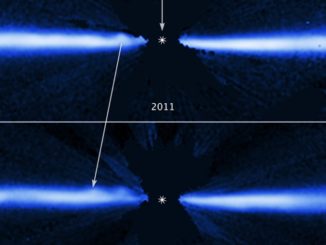
Can a massive star at the end of its life collapse into a black hole without first exploding in a supernova blast? That’s at least one explanation for the apparent disappearance of a star 2.5 million times brighter than the sun in a dwarf galaxy 75 million light years away.
“If true,” said Andrew Allan, a Ph.D. student at Trinity College in Dublin, “this would be the first direct detection of such a monster star ending its life in this manner.””
But it’s also possible the presumed luminous blue variable star, located in the Kinman Dwarf galaxy, dimmed after a strong outburst and became partially obscured by dust.
Observations of the dwarf galaxy between 2001 and 2011 indicated the presence of a massive star nearing the end of its life. While individual stars in the galaxy could not be resolved, spectral data indicated the presence of a luminous blue variable, a type of star that is unstable, occasionally exhibiting dramatic shifts in their spectra and luminosity.
Allan and his colleagues in Chile, Ireland and the United States wanted to learn more about how massive stars end their lives and thought the star in the Kinman galaxy could be a useful target. But when they twice looked for the star last year with the European Southern Observatory’s Very Large Telescope, they found no trace.
“We may have detected one of the most massive stars of the local universe going gently into the night,” said team member Jose Groh, also of Trinity College Dublin.
Archived data collected in 2002 and 2009 indicated the star could have been undergoing an outburst that ended at some point after 2011. That could have reduced the star’s brightness and blown away material shielding it from view.
But its collapse into a black hole is also a possibility, even though “it would be highly unusual for such a massive star to disappear without producing a bright supernova explosion,” Allan said.
For now, the star’s fate is a mystery. But the European Southern Observatory’s Extremely Large Telescope should be able to resolve stars in the host galaxy when the observatory comes on line around 2025, possibly settling the issue one way or the other.



